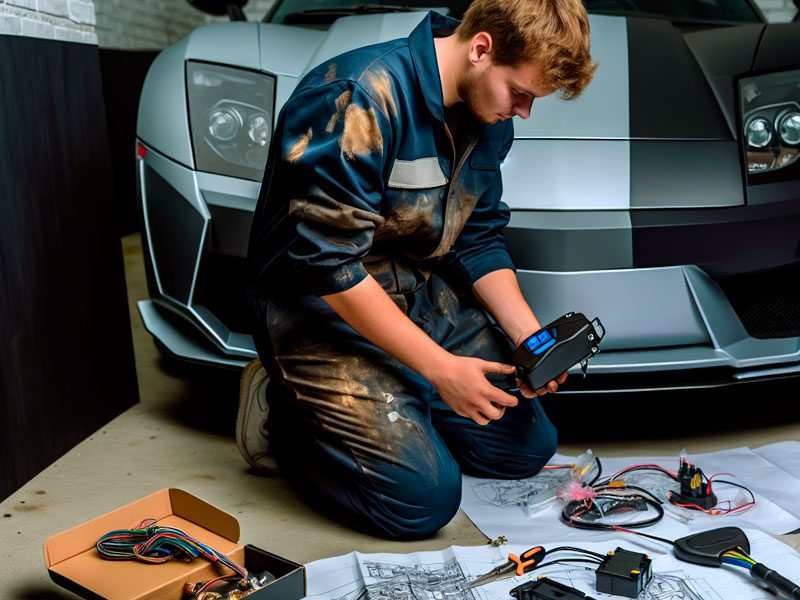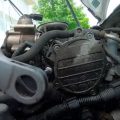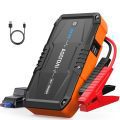If you’ve ever wished you could start your car from the comfort of your home or while sipping coffee at your favorite café, you’re not alone. High-tech car starters are becoming a must-have accessory for many drivers, offering not just convenience but also a touch of modern sophistication. However, the idea of installing one yourself can seem daunting. You might be wondering if you have the right skills, tools, or knowledge to tackle such a project. In this blog post, we’ll delve into whether a DIY installation is a viable option for car owners, helping you navigate the complexities and potential challenges that come with integrating this advanced technology into your vehicle. Join us as we explore what it takes to transform your driving experience without the need for a professional.
Understanding High-Tech Car Starters
High-tech car starters have revolutionized the way we interact with our vehicles, offering features that enhance convenience, security, and even comfort. These advanced systems can be a game-changer, particularly for those living in extreme weather conditions or seeking added safety measures.

What Are High-Tech Car Starters?
At their core, high-tech car starters are systems designed to start your vehicle remotely or through advanced technology. Unlike traditional key-based ignition, high-tech starters often integrate with smartphones, offer remote control capabilities, and enhance the vehicle’s security features. This means you can start your car from a distance, ensuring it’s warm in winter or cool in summer before you even step inside.
Key Features of High-Tech Car Starters
- Remote Start: One of the most appealing features, remote start allows you to start your vehicle from a distance, often up to a mile away. For instance, the Viper 5706V offers this functionality, letting you start your car, lock/unlock doors, and even pop the trunk, all from your key fob.
- Smartphone Integration: Many modern systems connect with your smartphone, allowing you to control various functions through an app. The Compustar DroneMobile lets users start their vehicle, lock/unlock doors, and track their car’s location via a mobile device, providing convenience at your fingertips.
- Security Enhancements: High-tech starters often come with added security features, such as alarm systems, GPS tracking, and immobilizers. The Directed Electronics 5103L provides advanced security with a two-way remote that alerts you if your vehicle is tampered with, ensuring peace of mind.
- Climate Control: Along with starting the engine, some systems can control the climate settings, allowing you to preheat or cool the interior. The AutoStart AS-2000 has this feature, ensuring your car is comfortable before you enter.
- Two-Way Communication: Many high-tech starters have two-way communication, meaning you receive feedback on your control commands. The Viper 5906V provides visual and audible confirmations when your command has been executed, so you know your vehicle is secure or running.



Types of High-Tech Car Starters
High-tech car starters can be categorized based on their features and installation requirements:
- Plug-and-Play Systems: These starters can often be installed without extensive modifications to your vehicle. The Start-X Remote Start system is an example that can be installed quickly and is compatible with many makes and models.
- Factory-Integrated Systems: Some vehicles come with the option for factory-installed remote start. For example, various models from Chevrolet and Ford offer built-in remote start features, which can be a seamless solution for those who prefer not to add aftermarket systems.
- Aftermarket Kits: For those looking to upgrade their existing vehicles, aftermarket kits like the Compustar 2WSS-AS provide robust features and can fit a wide range of vehicles. These kits usually require professional installation.
Comparison of Popular High-Tech Car Starters
| Feature | Viper 5706V | Compustar DroneMobile | Directed Electronics 5103L | AutoStart AS-2000 |
|---|---|---|---|---|
| Remote Start Range | Up to 1 mile | Varies with plan | Up to 1 mile | Up to 1,500 feet |
| Smartphone Control | Yes | Yes | Yes | No |
| Security Features | Yes | Yes | Yes | Basic |
| Climate Control | No | No | Yes | Yes |
| Two-Way Communication | Yes | Yes | Yes | No |
Choosing the Right High-Tech Car Starter
When deciding which high-tech car starter suits your needs, consider the following:
- Your Vehicle Type: Ensure compatibility with your car; some models may require specific kits.
- Feature Preferences: Determine what features are most important to you, such as smartphone integration or security enhancements.
- Installation Requirements: Decide if you want a plug-and-play system or if you’re comfortable with professional installation for more complex systems.
By understanding the various options and features of high-tech car starters, you can make an informed decision that enhances your driving experience while adding convenience and security to your vehicle.



Assessing Your Skills and Tools
When embarking on an installation project involving automotive electronics, it’s crucial to first assess your mechanical and electrical skills, as well as the tools you’ll need to complete the job effectively. This section will provide you with a structured approach to evaluate your capabilities and ensure you are well-equipped for a successful installation.
Evaluating Your Mechanical and Electrical Skills
Understanding your skill level is the first step in determining whether you can handle an installation project. Here are some key areas to consider:
- Basic Electrical Knowledge
- Familiarity with Ohm’s Law and the principles of voltage, current, and resistance.
- Understanding of circuit diagrams and the ability to read wiring schematics.
- Mechanical Aptitude
- Proficiency in using hand tools (screwdrivers, wrenches, pliers) to disassemble and assemble components.
- Experience with automotive systems such as starters, alternators, and sensors.
- Problem-Solving Skills
- Ability to troubleshoot issues effectively. For instance, if your new stereo system doesn’t power on, do you know how to check the fuse or the connections?
- Experience with diagnostic tools like a multimeter for testing electrical systems.
- Prior Experience with Automotive Electronics
- Have you installed or repaired any electronics in vehicles before? For example, replacing a car battery or installing an aftermarket radio?
- Knowledge of specific brands or systems, such as Pioneer or Kenwood for audio systems, can be beneficial.
Tools Required for Installation
Once you’ve assessed your skills, the next step is to gather the necessary tools. Here’s a checklist of essential tools for automotive electronics installation:
Essential Tools Checklist
| Tool | Purpose | Recommended Brands/Models |
|---|---|---|
| Multimeter | Measures voltage, current, and resistance | Fluke 115 or Klein Tools MM300 |
| Wire Strippers | Strips insulation from wires for connections | Irwin Vise-Grip 8-Inch |
| Soldering Iron | Joins wires electrically (often used in custom work) | Weller WLC100 |
| Crimping Tool | Attaches connectors to wires securely | Astro Pneumatic 3-in-1 |
| Screwdrivers | Tightens/loosens screws on electronic components | Craftsman or Stanley sets |
| Pliers | Grips, bends, or cuts wire and connectors | Channellock 440 |
| Heat Shrink Tubing | Insulates and protects soldered connections | 3M Heat Shrink Tubing |
| Electrical Tape | Insulates exposed connections | Scotch Super 33+ |
| Ratcheting Wrench Set | Tightens or loosens bolts in tight spaces | Tekton 3/8″ Drive Ratcheting Set |
| Drill/Driver | For mounting hardware and installing components | DeWalt DCD771C2 Cordless Drill |
Practical Application of Tools
To put this tool checklist into perspective, let’s consider a common installation scenario: upgrading your car’s audio system.
- Multimeter: Before you begin the installation, use a multimeter to check the voltage of the existing power wire and ensure it’s functioning correctly. This helps you avoid issues during installation.
- Wire Strippers and Crimping Tool: When connecting the new stereo to your car’s wiring harness, you’ll need to strip the wires and use the crimping tool to attach connectors securely.
- Soldering Iron: If you decide to make custom connections or repairs, a soldering iron is invaluable for ensuring a strong, reliable connection.
Importance of Prior Experience
Having hands-on experience with automotive electronics cannot be overstated. For instance, if you’ve previously installed a Bluetooth adapter in your vehicle, you are likely familiar with the wiring involved and any potential pitfalls. This experience can drastically reduce the time and frustration associated with new projects.
Conversely, if you’re new to automotive electronics, it might be prudent to start with a simpler task, such as replacing a car battery or upgrading a few light bulbs, before tackling complex installations.
Final Thoughts on Skill and Tool Assessment
Investing time in assessing your skills and gathering the right tools can make a significant difference in the quality of your installation work. By ensuring you have both the mechanical and electrical knowledge required, as well as the proper tools, you will set yourself up for success in any automotive electronics project.



Installation Process: Step-by-Step Guide
Installing a high-tech car starter can significantly enhance your vehicle’s convenience and security. In this guide, we’ll walk you through the step-by-step process of installing a remote start system, complete with wiring diagrams, safety precautions, and troubleshooting tips. We will also highlight common mistakes to avoid and emphasize the importance of adhering to the manufacturer’s instructions.
Tools and Materials Needed
Before jumping into the installation process, gather the following tools and materials:
- Tools:
- Screwdriver set (Phillips and flathead)
- Wire strippers and crimpers
- Socket wrench set
- Electrical tape
- Multimeter
- Soldering iron (optional)
- Materials:
- High-tech car starter kit (e.g., Compustar CS7900-S or Viper 5706V)
- Wiring harness specific to your vehicle
- Additional connectors or solder (if needed)
- Owner’s manual for your vehicle
Step 1: Prepare Your Vehicle
Safety Precautions
- Ensure the vehicle is parked on a flat surface with the ignition off.
- Disconnect the battery by removing the negative terminal to prevent electrical shocks.
- Wear safety glasses to protect your eyes while working.
Familiarize Yourself with the Owner’s Manual
- Review the car starter kit’s instruction manual. Each model may have specific requirements or configurations.
- Identify the location of the ignition wires, starter wires, and any other connections relevant to your vehicle.
Step 2: Identify Wires and Connections
Wiring Diagrams
- Most car starters come with a wiring diagram specific to the model. Refer to this diagram to identify the following wires:
- Ignition wires (usually red)
- Starter wire (usually yellow)
- Accessory wire (usually light blue)
- Ground wire (usually black)
Example Wiring Diagram
Here’s an example of a basic wiring diagram for a Compustar CS7900-S installation:
| Wire Color | Function |
|---|---|
| Red | Ignition 1 |
| Yellow | Starter |
| Light Blue | Accessory |
| Black | Ground |
Step 3: Connect the Wires
Splicing and Crimping
- Use wire strippers to remove about 1/4 inch of insulation from each wire you will connect.
- Twist the corresponding wires together and secure them with crimp connectors or solder for a strong connection.
Common Connections
- Connect the red wire from the starter to the ignition wire of your vehicle.
- Connect the yellow wire to the starter wire.
- Connect the light blue wire to the accessory wire.
- Connect the black wire to a metal bolt on the chassis for a solid ground.
Important Notes
- Always double-check your connections against the wiring diagram to avoid any miswires.
- Use electrical tape to insulate any exposed wires.
Step 4: Reconnect the Battery and Test
- Once all connections are made, reconnect the negative terminal of the battery.
- Start your vehicle using the remote start functionality to test if the installation was successful.
Common Issues
- If the vehicle does not start remotely:
- Verify all connections.
- Check if the battery in the remote starter is functional.
- Ensure the vehicle is in park and the hood is closed, as many systems have safety features.
Troubleshooting Tips
If you encounter issues during or after installation, consider the following troubleshooting tips:
- Remote Not Responding:
- Check the battery in the remote.
- Ensure the antenna is correctly placed and not obstructed.
- Engine Starts but Dies:
- Ensure all ignition wires are securely connected.
- Verify that the vehicle’s security system isn’t interfering with the starter.
- Installation Warning Lights:
- If a warning light appears on the dashboard, refer to the vehicle’s owner manual to diagnose the issue.
Common Mistakes to Avoid
To ensure a smooth installation process, be mindful of these common mistakes:
- Ignoring Manufacturer Instructions: Each car starter has its specific requirements. Deviating from these can lead to malfunctions.
- Improper Wire Connections: Double-checking connections before securing them can save you from reversing work later.
- Neglecting Safety Precautions: Always prioritize safety by disconnecting the battery and using protective gear.
Summary of Key Points
| Step | Key Actions |
|---|---|
| Prepare Vehicle | Disconnect battery, read manuals |
| Identify Wires | Refer to wiring diagrams |
| Connect Wires | Use crimping and insulating techniques |
| Test Functionality | Reconnect battery, check performance |
| Troubleshoot Issues | Verify connections, check remote battery |
By following this detailed step-by-step guide, you can successfully install your high-tech car starter. Remember, the key to a successful installation lies in preparation, careful handling of electrical components, and adherence to the manufacturer’s instructions.
Assessing DIY Feasibility and Professional Considerations
In conclusion, while installing a high-tech car starter can be a fulfilling project for those with the necessary skills and experience, it is not a task suited for everyone. The installation process can be complex, and improper handling can lead to potential issues with your vehicle’s electrical system. If you feel confident in your abilities and are equipped with the right tools, a DIY installation may be a great option for you. However, if you have any doubts or lack experience, it’s advisable to consider professional installation to ensure safety and reliability. Always assess your capabilities before embarking on such projects to make the best choice for your vehicle and peace of mind.






I recently installed a Viper 5305V on my own and it was a game changer! Just take your time and follow the instructions carefully.
That’s awesome! Thanks for sharing your experience. Viper’s definitely a solid choice for high-tech starters!
Are there any specific brands you’d recommend for beginners? I’m looking for something user-friendly.
Definitely check out brands like Viper or Compustar for their user-friendly features. They often have great customer support too!
I’d love to see a post on troubleshooting common issues with high-tech starters. That would be super helpful!
Thanks for the suggestion! Troubleshooting is a great topic to cover, and I’ll add it to my list for future articles!
Great article! Can you explain more about the different types of high-tech car starters available? I’m curious about features like smartphone connectivity.
Could you dive deeper into the wiring aspect? I’m a bit intimidated by that part of the process.
Absolutely, wiring can be one of the trickiest parts! I’ll make sure to include a more comprehensive wiring guide in the next post.
Does anyone have tips on how to avoid draining the car battery when using these systems? I’ve heard horror stories!
Great concern! Make sure to set your system to automatic shut-off or use a lower power mode when the car isn’t running. It can save your battery life!
I’m not super handy with tools. Do you think it’s a good idea to just call a professional for installation? I’d hate to mess it up.
Totally understandable! If you’re unsure, calling a professional might be the best route. Sometimes, a small error can cause bigger problems down the line.
Thanks for your comment! There are several types out there, including remote keyless entry systems and smartphone-controlled starters. I’ll definitely consider expanding on that in a future post!
I tried to install a Compustar system last year, and it was a bit tricky. I ended up having to redo some wiring, but it works perfectly now. So worth it!
Glad to hear it worked out in the end! Those initial struggles can be a learning experience for sure.
What about security features? How can I ensure my high-tech starter won’t make my car more vulnerable to theft?
Excellent point! Many systems come with built-in security features like alarms and GPS tracking. I’ll definitely write more about this in an upcoming article!
What tools do you recommend for someone just starting out? I’ve got a basic toolkit but might need to pick up a few extras.
Good question! A multimeter, wire strippers, and a soldering iron can be really helpful. I’ll add a more detailed list in my next article!